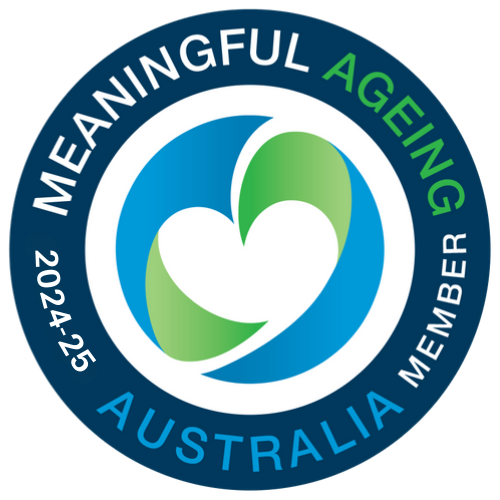Respite Care Melbourne - All you Need to Know
Caregivers play an essential role in our healthcare system. They are the people on the frontline, so to speak. They are family members and friends who give up their time, and in some instances, their own careers, and interests, to care for a loved one. However, sometimes they just need a break, a chance to hand over temporary caring duties to someone else for a little while. This is where respite care can help.
If you are considering respite care, but aren’t sure exactly what it is, or how it can help you, we’ve compiled a list of common respite care FAQs. Aunty Grace only provides temporary respite to our Home Care Package clients.
What is respite care?
‘Respite’ means ‘take a breather’ or ‘have a break’. If you’re a caregiver, having a break from time to time is essential for your own health and well-being. However, unless you have someone to take over your carer responsibilities, this may be difficult to do. That’s where respite care comes in. It provides safe, alternative care for your loved one, for however long it’s required, so that you can get some respite. Take a break to recuperate, refresh, and recharge your batteries.
Who provides respite care?
Respite care can be provided by family or friends, or by organisations (like Aunty Grace) such as:
- In-home care agencies
- Adult day care centres
- Community care services
- Residential care facilities i.e. nursing and aged care homes. These facilities must set aside a certain number of places for respite care.
- Hospice organisations
Which is best for your situation depends on… your situation.
What are the types of respite care?
There are 2 broad types of respite care – in-home respite care, and out-of-home respite care.
In-home respite care, or home visits, is having someone come to your home to provide care. It may be a trained professional or another family member or friend. The advantages of this type of care is that it allows your loved one to remain in their own home and still receive the care and attention they need whilst you take a break.
Out-of-home care can be:
Community and centre-based day care respite:
- Adult day care and community centres: offer a range of individual and group activities during the day,
- Local community respite and disability services: provide daytime recreational outings and community-based activities.
Cottage respite:
Cottage respite: provides overnight or weekend respite care. The ‘cottage’ is usually within an aged care facility.
Residential respite:
Residential respite and support care: provides longer respite accommodation and care than cottage respite, usually in an aged care home or supported accommodation. Requires eligibility assessment (ACAT), and may have a 2-week minimum stay requirement.
Residential respite is also available for emergency respite care.
Other types of residential respite care include:
- Supported independent living
- Short term transition care for people transitioning from hospital to home who still need specific care or medical services
Who needs respite care?
Primary caregivers like family members or friends commonly need respite care. These carers often don’t get regular breaks and can suffer from ‘caregiver burnout’ as a result. Respite care provides these breaks.
People receiving care may also need respite care, particularly if they can benefit from opportunities for group activities and social interaction, or if they need help with medical care.
How long does respite care last?
Respite care can be:
- A few hours a day in the case of community and centre-based daycare respite
- Overnight or weekend respite with cottage respite
- From several weeks up to 63 days a year with residential respite.
NB: People assessed as eligible for residential respite can access up to 63 days of subsidised residential respite care a year. Likewise, if you receive a Centrelink Carers payment, you can use up to 63 days of residential respite care per calendar year. An additional 21 days is available under certain circumstances.
What services are provided in respite care?
Respite care provides a wide range of services including:
- Assistance with daily activities (dressing, bathing, toileting)
- Meal preparation
- Medication supervision
- Companionship
- Transportation
- Shopping and other outings
In fact, most of the things you do as a caregiver can also be provided by respite care.
How do I find respite care services?
The Federal Government has 2 websites through which you can find, contact, and book respite care services. These are:
Additionally, state governments have similar websites with contact information for local respite care providers.
Finally, you can also do an online search.
Is respite care available under a Home Care Package?
Yes, respite care is available under a Home Care Package; however, permanent residential care (subsidised or private) and residential respite (subsidised) is not.
If you are unsure as to whether you can access a certain type of respite you can talk to one of our Home Care Specialists about your needs and what is available to you under a Home Care Package.
What are the benefits of respite care?
Respite care provides benefits for both caregivers and those receiving care. If you’re a caregiver, it provides a break from caring duties so you can
- Take some R and R, and recharge your batteries
- Take care of personal matters
- Spend time with other family members and friends
If you’re the person receiving care, respite care can provide you with
- Social interaction
- Group activities (learning new skills, short trips)
- Variety, stimulation, independence, change in routine,
- Medical treatment
- Assisted living help
- Emergency help
How do I prepare for respite care?
How you prepare for respite care depends on the type of care you need.
Residential respite care for example requires more preparation than either in-home or community-based care because you’ll need
- a) an ACAT assessment if you want government-subsidised care, and
- b) apply in advance to ensure you get a place.
Further to this:
- Discuss plans with the person you’re caring for so they not only understand what’s happening, and why but also have input if they can
- Decide which type of respite care you require
- Do your research so you can be sure you’re choosing the best provider for your particular situation.
- Find out what forms and assessments need to be completed for the type of respite service you’re choosing. You’ll have application forms and contracts to sign even with in-home and community-based respite.
- If they’re going into residential respite care, contact the home to find out what they need the person to bring with them. It will include essentials like medications, personal items, and clothing.
- If you’ve chosen in-home or community-based care, discuss daily routines and other essential information with the carer or service provider
- Discuss a respite care plan with your chosen provider
- Provide your contact details for emergencies
- If you’re going away arrange with the carer how you’re going to keep in touch with your loved one as they may need to set up the equipment i.e. for FaceTime, Skype etc
- Notify Centrelink if you get a Carer Payment or Allowance and the respite care is for longer than 1 FULL day
How do I choose a respite care provider?
Find a list of respite care providers in your area, or in the desired area.
Ask fellow carers about their experiences with the various respite services on the list – online carers groups and forums for instance can be a fountain of knowledge and advice! Ask for recommendations.
Make a short-list, prepare a list of questions based on the information you want to know (how much input into the care plan will you have; if you’re having in-home care, do they supply the same carer each time and so on)
Contact each provider to discuss your requirements in detail. Try and have a meeting with them if possible.
Choose the provider that can best offer what you require.
How can I make the most of respite care?
Above all else, you need peace of mind to truly benefit from respite care. You need to know your loved one is well cared for in your absence. That requires effective preparation…
What if I don't want to leave my loved one with a stranger?
If you don’t want to leave your loved one with a stranger whilst you take a break, you have several options:
- Consider asking another family member, or someone the person knows, to come in and take care of them
- Arrange to have the same carer come each time
- Stay home yourself for the duration of the respite care whilst a carer comes in and stays with you both.
How often should I use respite care?
You should use some type of respite care as often as you need to. For some carers, that will be regularly whilst others may only need a good break once or twice a year.
How do I ensure a smooth transition back to caregiving?
If you’ve been away, it can be challenging to step back into your role as caregiver. Some ways to help ensure the transition goes as smoothly as possible include:
- Plan and organise what you’ll need to do to step back into the role. It will help you get into the right mindset
- Contact the respite care provider and get an update on your loved one, although you’ve probably been doing this anyway! Note any changes to routine or treatment.
- Give yourself time to adjust back to being a primary caregiver. Feeling overwhelmed or disoriented at first is normal, especially after a longer break.
- Get support if you need it and don’t forget to look after yourself.
What should I do if I have concerns about the respite care provider?
All respite care providers must have a complaints system in place. Your first step is to use this process to address your concerns. If the situation remains unresolved or is not resolved to your satisfaction, you can then escalate it. The Aged Care Quality And Safety Commission website has detailed information and guidance on reporting concerns about care providers. Alternatively, you may wish to find another provider.
How can I stay connected with my loved one during respite care?
Thanks to modern technology, taking a respite break doesn’t mean losing contact with your loved one for the duration! Many people, including seniors, learned to use modern communication technologies to stay connected during Covid 19. There’s no reason you can’t use any or all of these to keep in touch with your loved one during respite care. You can also phone them or use messaging apps like Messenger.
Is respite care only for emergencies?
Respite care isn’t just for emergencies. In fact, it’s far more beneficial if you try to incorporate regular respite care into your caregiving schedule. Even a few hour's break a week, or having daily help, is beneficial.
We hope this list of respite care FAQ provides you with some of the information you’re after. However, you can also contact us if you require further information or advice.
[i] Eligible Australians are ‘frail’ seniors 65 & over, or 50 & over for Indigenous Australians, and persons with functional limitations, who require assistance and support to live comfortably.
[ii] This programme will be replaced by the Support at Home Programme from July 1st 2025.



